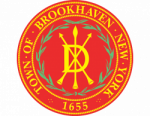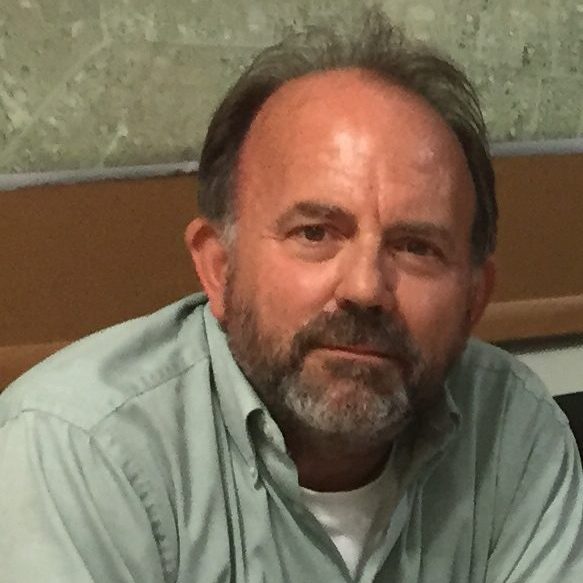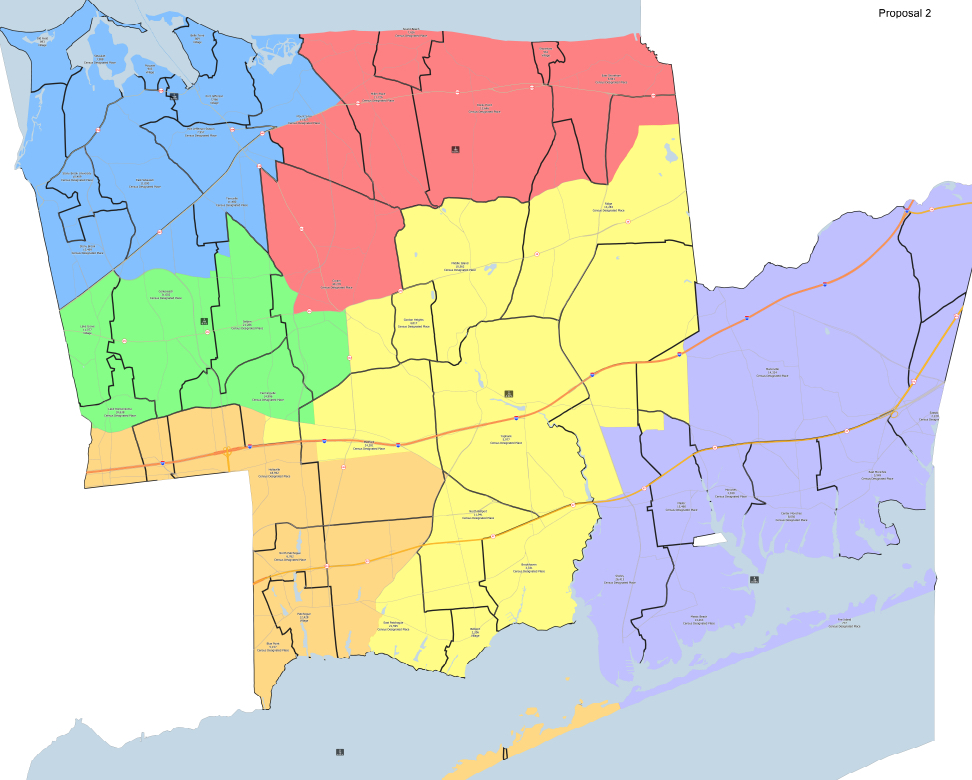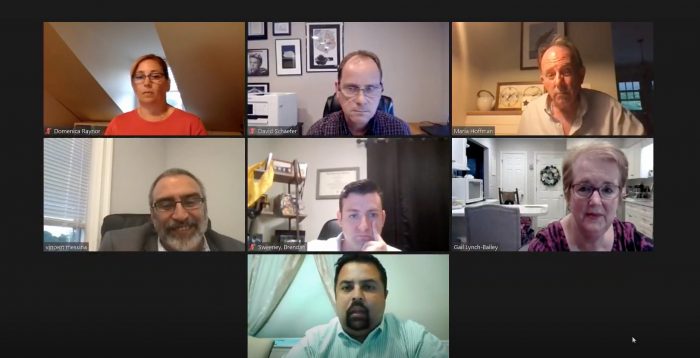The Town of Brookhaven’s controversial redistricting process concluded on Thursday, Sept. 29, after the Town Board voted unanimously to approve the latest proposed map.
The Town Board, which has a 6-1 Republican majority, took over the redistricting process after an appointed redistricting committee failed to find agreement on a draft proposal. Days after the committee formally disbanded, Town Supervisor Ed Romaine (R) presented his own map. For more on this story, see “Brookhaven officials react to latest redistricting proposal” (TBR News Media website).
Councilmember Jonathan Kornreich (D-Stony Brook) kicked off the public hearing with a forceful line of questioning of the town’s designated mapmaker, David Schaefer of Schenectady-based firm Skyline Consulting.
Kornreich pressed Schaefer on a range of subjects, such as his familiarity with the hamlets throughout the town. He also inquired about how Schaefer arrived at an original determination to split Port Jefferson Station and Terryville between Council Districts 1 and 2, and why he decided to move most of Ridge into CD4.
Responding, Schaefer said that he created the initial maps solely to bring the six council districts into roughly equal populations. “The first draft that I submitted is all population driven,” he said.
Following Kornreich’s line of questioning, residents pressed their representatives on the Town Board repeatedly over concerns that arose throughout the redistricting process and the alleged inequities in drawing the district lines.
Ira Costell, a resident of Port Jefferson Station, argued Schaefer’s approach was unproductive, reducing redistricting to an analytic method while ignoring its impact on communities of interest.
“There’s more than just standard deviations and numbers at play here,” Costell said. “There’s people, there’s communities, there’s interests, and there’s fairness at stake here, and I don’t see a lot of it in what the mapmaker initially did.”
‘Despite the hideously flawed process that led here, I think in the end we’ve created a map that’s got some compromises, and it’s got a little something for everyone to be unhappy about.’
— Jonathan Kornreich
Costell further railed against the committee process, saying, “The hearings were poorly advertised, they were chaotic, they were confusing, they were marked by a lack of support information from the town, which resulted in maps that just appeared out of thin air.” He continued, “What does seem transparent, however, is the majority on this board seems poised to ignore the clear will and desires of the voters who did speak out.”Terryville resident Lou Antoniello suggested Schaefer was not being truthful during his remarks. He added that tampering with district boundaries may affect future redistricting procedures.
“While the map that this board put together is light-years better than the original map, which cut out a huge chunk [of Terryville from CD1], it’s still cutting — cracking — Council District 1,” he said. “That sets a dangerous precedent for the future.”
Members of the redistricting committee also attended the public hearing. Among them was Gail Lynch-Bailey, who had served this year and in 2012. She referred to the two initial maps which split Port Jefferson Station and Terryville as a ploy to divert the public’s attention away from alleged gerrymandering in Council District 4. This district includes the racially and ethnically diverse communities of Coram, Gordon Heights and North Bellport.
“Once the public realized the commission had had no input into them, the maps were readily recognized by many for what they were: diversions, bait-and-switch tactics, ‘pay-no-attention-to-the-man-behind-the-curtain’ maps intended to focus attention on the northern CDs instead of what was going on for CD4,” she said. “This ruse was, and still is, unconscionable.”
Also making an appearance was Ali Nazir, the Republican co-chair on the redistricting committee. He defended the movement of mostly white Ridge into CD4, citing the hamlet’s longstanding ties to the Longwood community.
“Despite rhetoric of the contrary, Ridge has always been in Council District 4,” Nazir said. “Ridge has a long history with the Longwood community, and to arbitrarily excommunicate them from the Longwood community is quite frankly wrong.”
Port Jefferson Station and Terryville, however, remain mostly united within the boundaries of Council District 1. Kornreich, who voted with the majority, justified his vote, saying this map would not split minority communities or dilute their votes.
“We negotiated in good faith, and the supervisor fulfilled his promise to keep Gordon Heights and North Bellport together, not to dilute the minority vote, and in good faith, I will support the agreement we made,” Kornreich said. “Is it an ideal map? No. Is it a map that I were to draw? Of course not. But when you’ve got one Democrat and a row of Republicans, you tell me what level of political power you have.”
In concluding his remarks, the CD1 councilmember said the final map reflects a series of compromises. “Despite the hideously flawed process that led here, I think in the end we’ve created a map that’s got some compromises, and it’s got a little something for everyone to be unhappy about,” he said, adding, “I hope that we can get to work and solve the real problems that face our town.”
No other board member spoke during the hearing. Following the vote, a droning cry rained from some in the audience, the dissidents shouting, “Shame on you, shame on you.”
It remains unclear whether the map will face challenges in court or whether those challenges could hold up given the bipartisan outcome.









